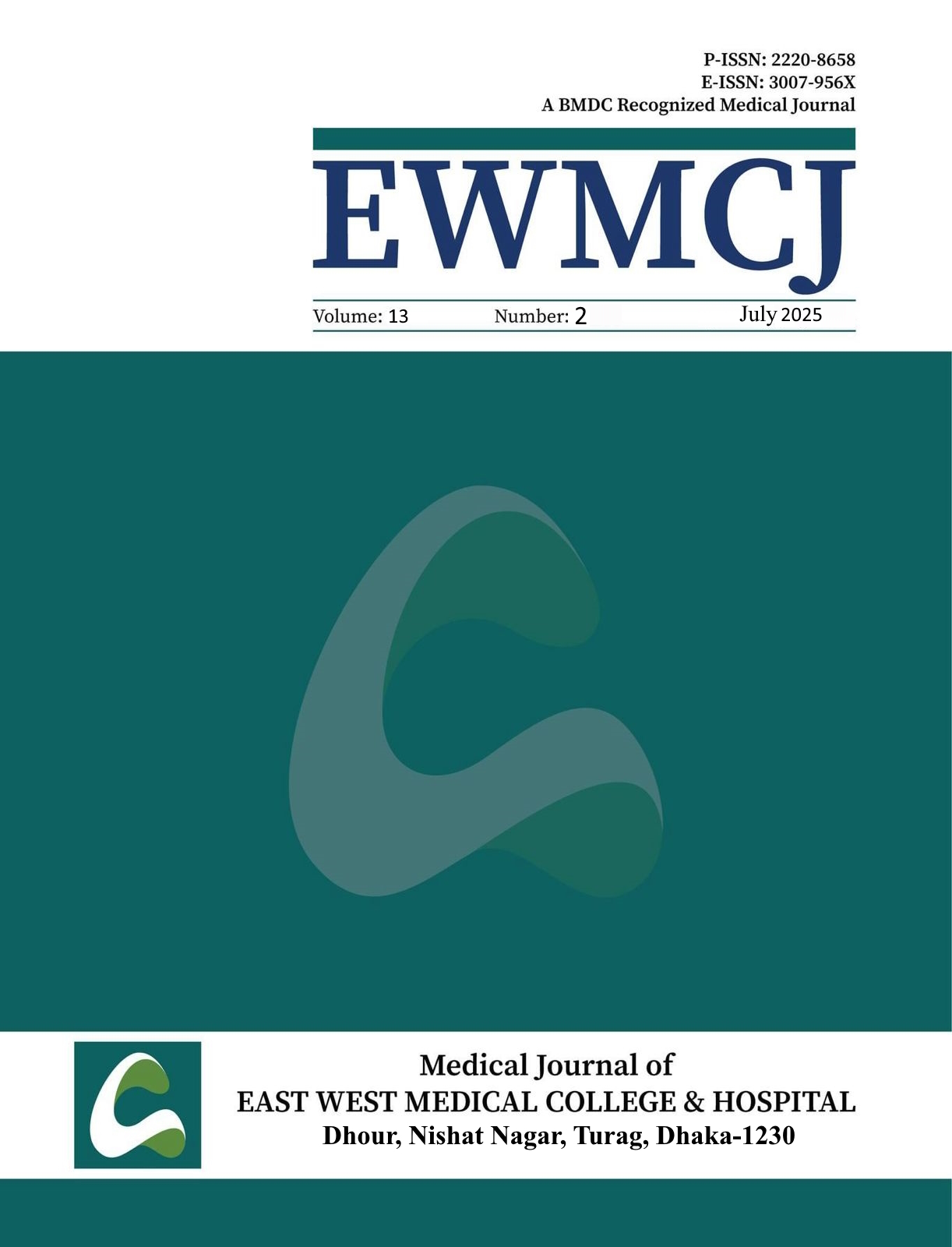Correlation of Prescribing Pattern of Antihypertensive Medication and JNC8 guideline in Hypertension with Chronic Kidney Disease in a Tertiary Care Hospital in Bangladesh
DOI:
https://doi.org/10.3329/ewmcj.v13i2.79218Keywords:
Anti hypertensive drugs, Chronic Kidney Disease, Mono Therapy, Combination Therapy, Prescription PatternAbstract
Background
Hypertension is a cardiovascular disease condition. If it is untreated, it may causes severe morbidity and mortality. Hypertension is both a cause and effect of Chronic Kidney Disease (CKD) and affects the vast majority of CKD patients. So effective blood pressure control is necessary. The risk and progression of CKD may reduce by controlling HTN. Control of HTN plays a major role in preventing its progression to end stage kidney disease and death. The objectives of the study were to evaluate the class, dosing schedule of anti hypertensive prescribed in CKD and the percentage of mono therapy and combination therapy.
Material and methods: A cross-sectional, observational study conducted in the Department of Pharmacology in collaboration with the Department of Nephrology out patients’ Department in Mymensingh Medical College Hospital, Mymensingh.
Results: Most commonly used single drug is CCB (13.27%) and most commonly used combination therapy is CCBs + ARB.
Conclusion: It is concluded that in CKD with HTN, majority of patients were treated with combination therapy. CCB was found to be the commonest prescribed anti hypertensive in mono therapy and in combination therapy. According to JNC8 guideline majority of the BP goals were achieved.
EWMCJ Vol. 13, No. 2, July 2025: 97-102
177
111
Downloads
Published
How to Cite
Issue
Section
License
Copyright (c) 2025 Jakia Binte Joynal, Hazera Sharmin, Fatima Farhana, Umme Salma, Afia Afrin, Khatun E Zannat

This work is licensed under a Creative Commons Attribution 4.0 International License.




